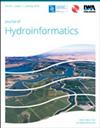利用摄像头进行垃圾屏堵塞自动检测的深度学习:洪水风险管理的实用信息
IF 2.2
3区 工程技术
Q3 COMPUTER SCIENCE, INTERDISCIPLINARY APPLICATIONS
引用次数: 0
摘要
垃圾滤网用于防止垃圾进入河流的重要部分。然而,垃圾可能会堆积在滤网上并引发洪水。这就使得对它们的监测对于维护和洪水建模都至关重要(例如,当地的预测可能会因为垃圾屏被堵塞而发生变化)。我们开发了三种新颖的深度学习方法,用于垃圾屏幕的维护管理,包括使用摄像头自动检测垃圾屏幕的堵塞情况:基于图像分类的方法、基于图像相似性匹配的方法和基于异常检测的方法。为了便于终端用户使用,这些方法可以直接应用于终端用户安装的任何新的垃圾屏蔽摄像头。我们建立了一个标有垃圾屏幕图像的新数据集,用于训练和评估我们的方法在准确性和对终端用户的影响方面的效率。该数据集由英国环境署安装的 54 台摄像机拍摄的 80,452 幅垃圾屏蔽图像组成。这项工作表明,垃圾围网堵塞检测可以利用垃圾围网摄像机和深度学习实现自动化,这将对垃圾围网管理和洪水建模产生影响。本文章由计算机程序翻译,如有差异,请以英文原文为准。
Deep learning for automated trash screen blockage detection using cameras: Actionable information for flood risk management
Trash screens are used to prevent debris from entering critical parts of rivers. However, debris can accumulate on the screen and generate floods. This makes their monitoring critical both for maintenance and flood modeling purposes (e.g., local forecasts may change because the trash screen is blocked). We developed three novel deep learning methods for trash screen maintenance management consisting of automatically detecting trash screen blockage using cameras: a method based on image classification, a method based on image similarity matching, and a method based on anomaly detection. To facilitate their use by end users, these methods are designed so that they can be directly applied to any new trash screen camera installed by the end users. We have built a new dataset of labeled trash screen images to train and evaluate the efficiency of our methods, in terms of both accuracy and implications for end users. This dataset consists of 80,452 trash screen images from 54 cameras installed by the Environment Agency (UK). This work demonstrates that trash screen blockage detection can be automated using trash screen cameras and deep learning, which could have an impact on both trash screen management and flood modeling.
求助全文
通过发布文献求助,成功后即可免费获取论文全文。
去求助
来源期刊

Journal of Hydroinformatics
工程技术-工程:土木
CiteScore
4.80
自引率
3.70%
发文量
59
审稿时长
3 months
期刊介绍:
Journal of Hydroinformatics is a peer-reviewed journal devoted to the application of information technology in the widest sense to problems of the aquatic environment. It promotes Hydroinformatics as a cross-disciplinary field of study, combining technological, human-sociological and more general environmental interests, including an ethical perspective.
 求助内容:
求助内容: 应助结果提醒方式:
应助结果提醒方式:


